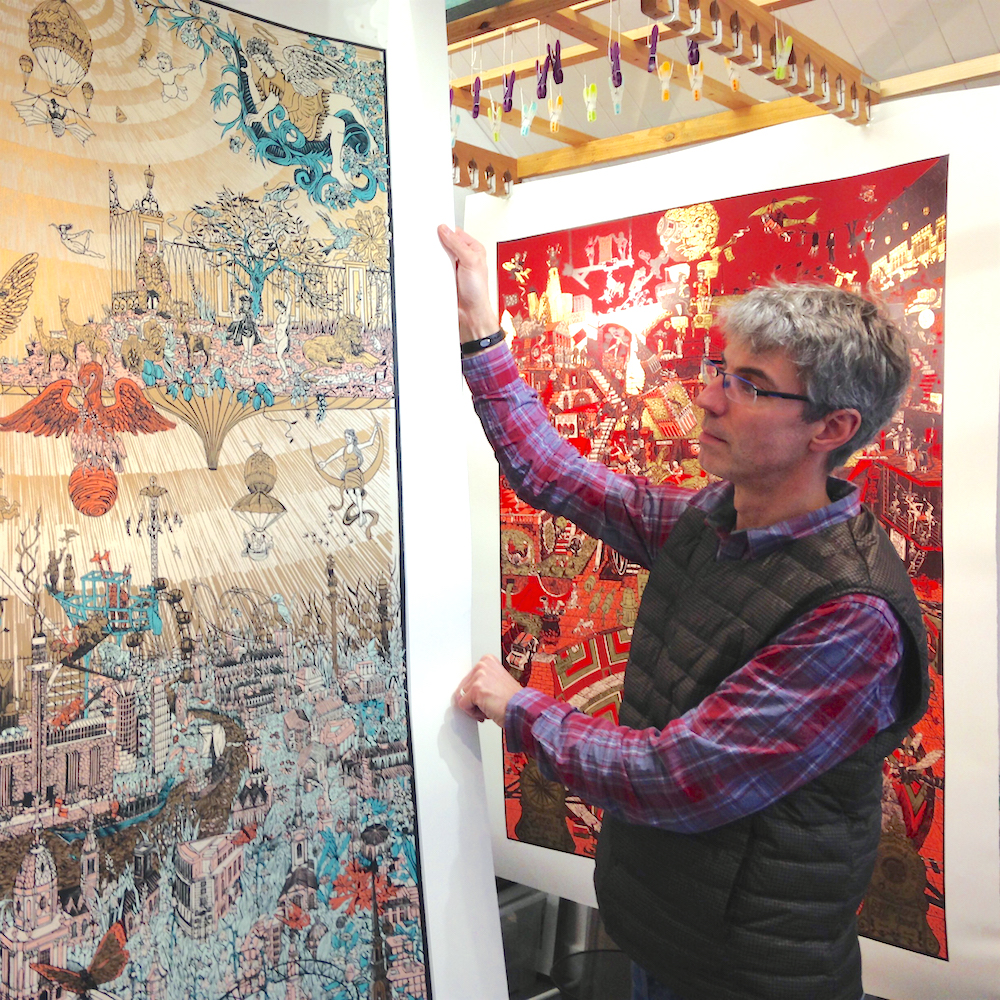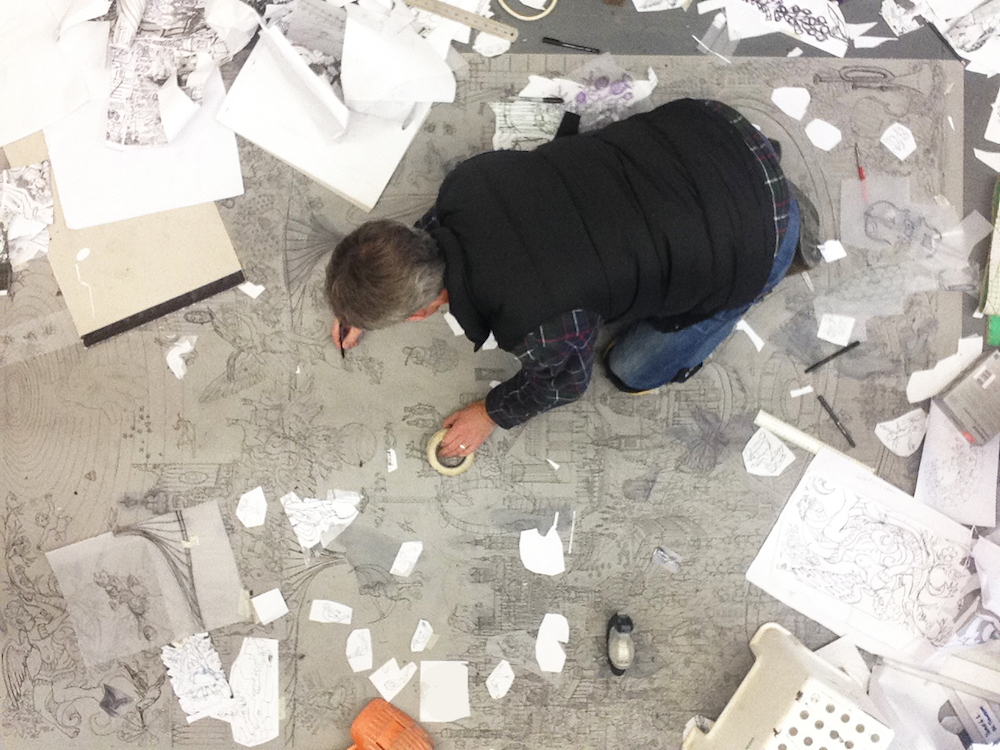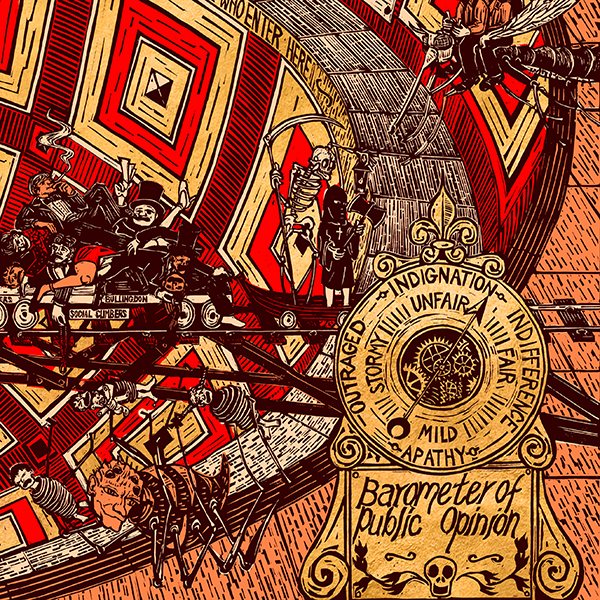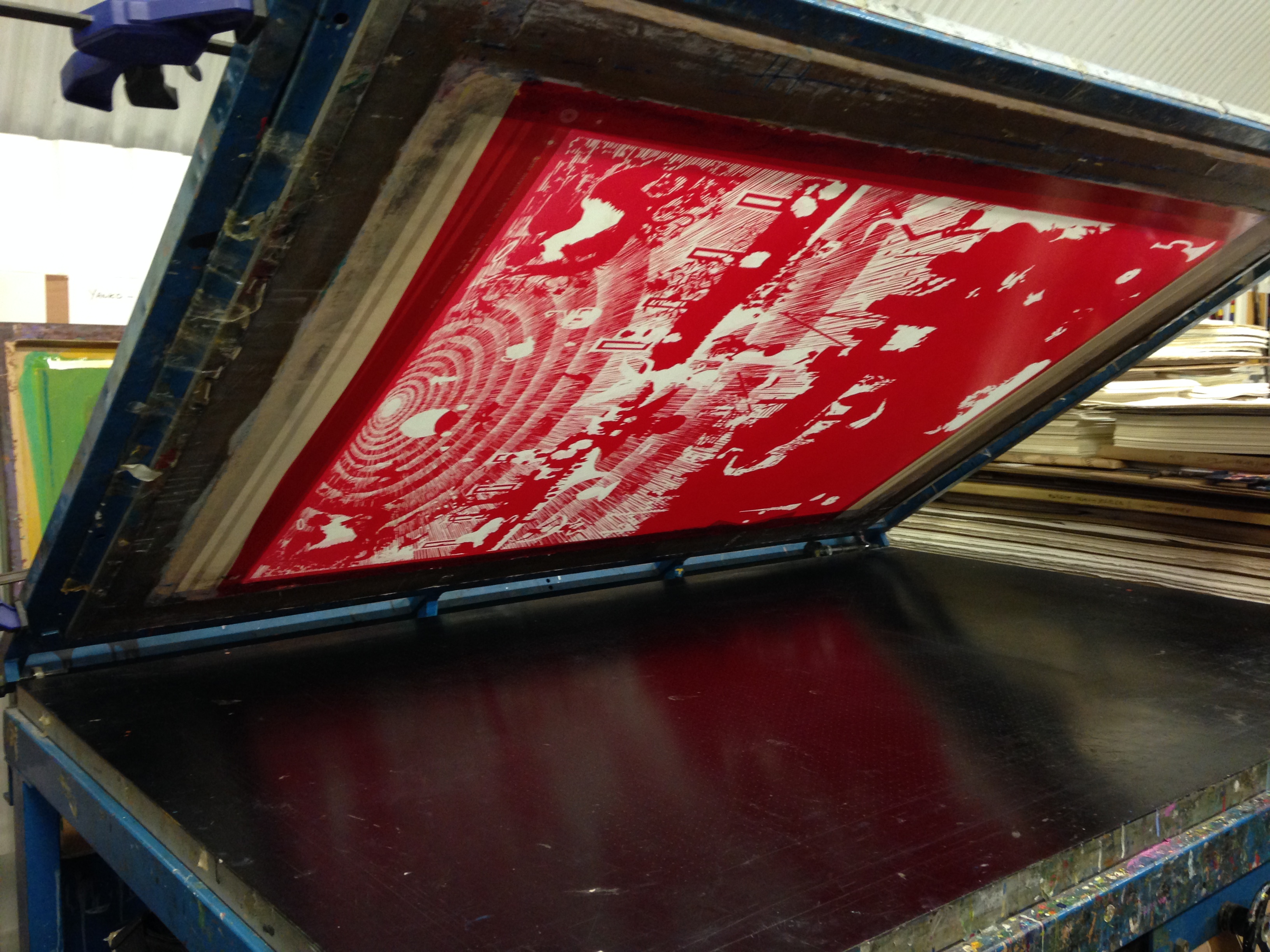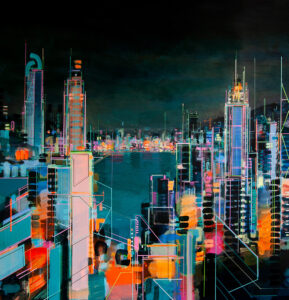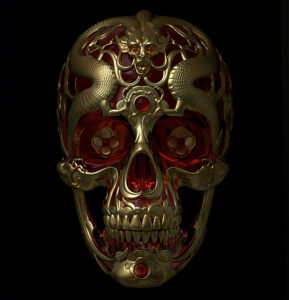We use cookies to make your experience better. To comply with the new e-Privacy directive, we need to ask for your consent to set the cookies. Learn more.
In the studio with Tobias Till
Tobias Till with Paradiso and Inferno
This week In The Studio, TAG Fine Arts speaks to Tobias Till. He talks us through his time at art school, how he got into printmaking, and the meaning of art. His latest piece of work has just been unveiled at our stand at the London Art Fair this week! Paradiso, a companion piece to 2017's Inferno, is also a depiction of contemporary London inspired by Dante Alighieri’s iconic poem The Divine Comedy.
When did you first start working with TAG Fine arts?
I think it was around 2009, an artist friend of mine was showing with TAG Fine Arts and thought that my prints might suit the gallery. I sent some examples of my work and was excited to receive a phone call from Hobby. It is a gallery run with an enormous amount of energy, enthusiasm and is very supportive of its artists. I was really pleased to be included!
What is your background?
I studied Fine Art at the Central School of Art, Byam Shaw School of Art and the Royal Academy. While I predominantly painted, I experimented a bit with film, printmaking, and photography. Looking back, I guess I was not fully satisfied with painting as a medium and was searching for something else. I didn’t do any relief printmaking until I’d left art school and I was doing some teaching as an artist in residence. I did a relief print for a lesson and became hooked! I think the combination of colour and graphic simplicity were a perfect combination for me.
Tobias Till - Paradiso - courtesy of TAG Fine Arts
Did you ever decide to be an artist?
I think there were a couple of decisive moments for me; the first was in my last year of school. I did a lot of drawing over the summer and I showed them to the art teacher - who had never met me before. He looked through my work and I remember telling him that I wanted to do a Foundation Course. He could easily have dismissed it as a totally unrealistic idea but he didn’t. He gave me a stack of sketchbooks and told me to come back in a week.
The second was when I received a place at the RA Schools. I think this opportunity really gave me the extra time to develop as an artist.
What does art mean to you?
Play. If art is not the inventive and playful investigation of ideas and an exploration of the artistic medium, it will be without life or character.
The artist at work
Describe what your workspace is like.
I have a studio in my garden. It is separate from my house but close enough that I can go back out in the evenings or work for periods of time while balancing family life.
Tobias' lino cutting stage
Do you have any routine you follow when you’re creating?
The larger works that I have created over the last few years have involved quite a bit of research. With these, I might just be reading and note-taking for several months. While I probably won’t be doing much drawing at this time, a mental image will begin to build up in my mind. At some point, I will start sketching out ideas in an attempt to define the overall structure. Sometimes the setting comes first, and at others times the characters and detail are the starting point. Then come the drawing, carving and printing.
Tobias Till - Inferno (Detail) - courtesy of TAG Fine Arts
What is your favourite work of art? Why does it inspire you?
I’ve had different favourites at different times. Artists who have been significant influences include Bill Brandt, Matisse, Mondrian, Gabo, Daumier, Cartier-Bresson, Hogarth, Dürer and Bruegel. I think Daumier’s La Blanchisseuse is one for which I have an enduring affection. Daumier has the ability to describe people and their humanity in the simplest of forms.
If you could have dinner with any artist, past or present, who would it be and why?
I know very little about Pieter Bruegel’s personal life but from his paintings and observations, I imagine him to have an enormous love for life and bonhomie. I assume that he would be a fun person to be around.
How important are current affairs and sociohistorical events to your works?
They seem to have become more so. I’m not sure if it is a phase that I am going through or something that will continue to come to the fore of my work. Creating a satirical piece of work, such as Inferno, over the course of two years was a challenge in terms of selecting both contemporary references and also more universal and long-term references to human fallibility.
The final stage of the printing process
Do you think social media has impacted your career? How so?
Yes. I know that my work has reached a wider audience as a result of it.
Do you create your best work independently or when within a community?
I create almost all my work independently although I have enjoyed the few commissions that I have been asked to do.
What advice would you give to upcoming artists?
Be truthful to one's intentions and stick with them.
Do you love what you do? Why?
Yes. I love the opportunity to delve deeper into a subject that I love. The more I work, the more I see the potential for new opportunities.
How would you describe your style?
I try to let it stand for itself. Sometimes others describe it as graphic or cartoony. I don’t have a problem with either of those descriptions. Relief printing has a distinctive visual appearance in itself. I would like to think that I have developed a personalization of this language that is specific to my prints and what I am trying to convey.
Lino-cut details of his latest work, Paradiso
What themes do you reflect on in your work?
Human relationships and our relationship with our environment.
Do you collect any art yourself?
Yes, but not as much as I would like. Swapping prints is a nice way to collect work from colleagues.
What inspires you to create?
The need to play with and subvert the status quo.
What artwork of yours would you like to be remembered for?
I’d like to think it would be one of the larger prints which I have spent the most time and effort on, but Daumier demonstrates that it is sometimes the simplest of things that can work best.
What is your quote to live by?
Hard work and integrity.
This article was written by Helena Cardow. If you enjoyed reading it, share with friends on Facebook and Twitter, and don't forget to follow TAG Fine Arts on Instagram!




